Russ Ouellette
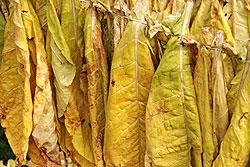 Tobacco comes from all over the world, but some people might be surprised by where certain tobaccos are grown. It’s fairly common knowledge that an experiment to try to grow Oriental varietals in the United States failed miserably when the transplanted seeds brought forth tobacco that was more like Burley than Smyrna or Bashi Bagli. Other strains, however, have faced greater success when grown elsewhere with unique characteristics that made them very useful and valuable in a wide range of blends. Here’s an overview of the different types of component leaves and where they’re grown.
Tobacco comes from all over the world, but some people might be surprised by where certain tobaccos are grown. It’s fairly common knowledge that an experiment to try to grow Oriental varietals in the United States failed miserably when the transplanted seeds brought forth tobacco that was more like Burley than Smyrna or Bashi Bagli. Other strains, however, have faced greater success when grown elsewhere with unique characteristics that made them very useful and valuable in a wide range of blends. Here’s an overview of the different types of component leaves and where they’re grown.
Burley- Burley is a huge crop because of its use in cigarette production, partially because of its (usually) mild flavor, and higher nicotine content. It is also widely used in pipe blends because the darker varieties add some earthy spiced and strength to a mixture, but the lighter "white" Burleys may be even more valuable for their ability to easily absorb casings and top dressings. Since the US and European markets have seized upon aromatic blends over the last fifty years, the use of Burley has been vital. It has become even more important due to the large increase in use of black Cavendish which used to be made of stoved Virginia (sometimes also called brown Cavendish), but in modern tobacco making, it typically refers to sugared and toasted Burley, often from the Green River, One-Sucker varietal. Curing for Burley is almost exclusively of the air-cured variety, except for some fire-cured types.
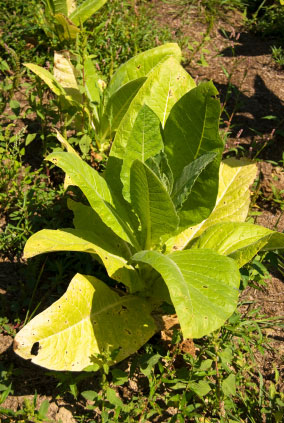 Burley is grown in the US from the Midwest to the Atlantic Coast regions with the main growing states being Kentucky, Tennessee, North Carolina, Virginia, Maryland, Ohio, West Virginia, Missouri and Indiana. The stronger varieties tend to be from Tennessee and Kentucky. Outside the States, some fine Burley is grown in Malawi, Mexico, Canada, Brazil and Argentina. Most of the foreign-grown leaf is used outside the US and is favored by the European pipe tobacco manufacturers. [Editor’s note: For more information, see Russ’ "Burley – The Rodney Dangerfield of Tobacco".]
Burley is grown in the US from the Midwest to the Atlantic Coast regions with the main growing states being Kentucky, Tennessee, North Carolina, Virginia, Maryland, Ohio, West Virginia, Missouri and Indiana. The stronger varieties tend to be from Tennessee and Kentucky. Outside the States, some fine Burley is grown in Malawi, Mexico, Canada, Brazil and Argentina. Most of the foreign-grown leaf is used outside the US and is favored by the European pipe tobacco manufacturers. [Editor’s note: For more information, see Russ’ "Burley – The Rodney Dangerfield of Tobacco".]
Virginia- Virginia is highly prized for both cigarettes and pipe tobacco due to its significant sugar content, making it remarkably sweet without having to add flavorings, and that leads to a more acidic smoke which helps reduce bite in pipe mixtures. The yellow and bright strains tend to be very sweet with notes of citrus, hay, grass or tea, and can help balance out sourness when blended with Burleys. Orange and red versions of the leaf aren’t quite as sweet and exhibit toasty or bread-like elements. The stoved black Virginias (usually made from yellow) have an accented sweetness with a bit of an "edge", almost like the subtle sweetness of Scotch or Bourbon.
Virginia is grown in the United States in Virginia (of course) but also in North Carolina and Maryland with smaller amounts grown elsewhere. Virginia is also widely grown outside the US. Some places that Brightleaf (an alternative name for Virginia) is cultivated are in South America, Europe and Africa. It’s common knowledge that much of the Virginia used by European makers comes from Africa, especially in the blends from Samuel Gawith and Gawith, Hoggarth & Co. Some remarkably sweet Virginia comes from Bulgaria and (believe it or not) France.
Orientals- Oriental tobaccos cover a broad range of varietals that tend to be sweet, fragrant, floral and/or earthy. Most of them are sun-cured and are grown on plants that have a large number of small leaves. Among the many varietals, some of which are all but extinct, are Smyrna, Basma, Drama, Yenidje, Xanthi, Bashi Bagli, Djebel, Dubec, Samsoun and Katerini.
They are low in nicotine and easy smoking tobaccos, so they are used (less today than in the past) in cigarettes, but they are of great value in pipe blends as they add a lot of flavor and aroma without the need for flavorings.
The main growing regions today are in Greece, Macedonia, Turkey and Bulgaria, but some is also grown in South Africa. As I previously mentioned, these varietals don’t often work well when grown elsewhere, which leads to the conclusion that microclimate has as much to do with the end product as the strain of seed used.
Latakia falls into the Oriental category because it’s made from Smyrna (Cyprus) or Shek-el-Bint (var.)(Syria), although no production currently is coming from the latter. Latakia’s signature campfire-like flavor and aroma comes from the fact that the tobacco is hung in barns with an open fire made of aromatic woods and herbs which produces smoke that saturates the leaf until it’s black.
Perique-Perique is an easy one to discuss because it only comes from one place- a triangular section of St. James Parish in Louisiana. The St. James version only grows in that small triangle. The leaf is similar to Burley and is grown in soil that is known to add a spiciness, as it’s akin to the earth in which the cayenne peppers for Tabasco is cultivated. But because the consistency of the crops varies widely, some other tobacco has to be used, so a One-Sucker Burley variety from elsewhere is also used. What really makes Perique so unique is the processing. The tobacco is put in barrels and compressed using jackscrews. The cells burst and fermentation takes place, with the tobacco being turned multiple times in a one year span, resulting in a dark brown, pungent and intensely flavored tobacco.
So now you have an idea of how multinational your blends may be. These leaves from all over the world make blends with a one-of-a-kind flavor profile because of the uniqueness of each and every component, with the result being able to be reproduced year-to-year, allowing for changes from one crop to the next.
|
Russ Ouellette is the blender/creator of the Hearth & Home series of tobaccos for Habana Premium Cigar Shoppe and www.pipesandcigars.com in Albany, NY. He has been a pipe smoker and blender for over 30 years, and enjoys feedback from the pipe smoking public. You can reach Russ at russo@pipesandcigars.com or by calling 1-800-494-9144 on Monday, Wednesday and Thursday from 9 am to 5 pm and Friday from 1 pm to 5 pm. |



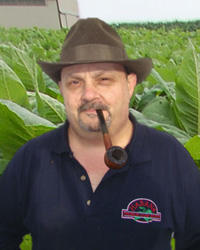







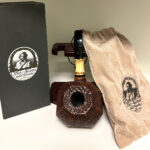
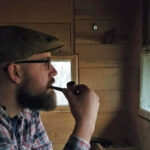
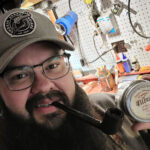




Thanks Russ. Excellent overview. Glad you’re feeling better.
Great article Russ. Glad to hear you’re back on your feet. When you talk about Perique you said that the leaf that it is made of is “…similar to Burley”, what does that mean? Do they use a hybrid leaf that doesn’t have a name? Is it Burley leaf in Perique or not? lol
There’s a strain of leaf that’s called Perique, but it’s somewhat similar to Burley, except for where it’s grown, but it isn’t Perique as we know it until it’s been processed.
Thanks for the kind words. I’m not at 100% yet, but I will be soon, and I’m feeling better than I have in a long, long time. I’ll be back on the pipe show circuit later this year, and am starting to work a little bit.
Russ
When I was a young child we moved from Michigan to Tennessee. My parents bought a house here that had a barn full of tobacco hanging to dry. They ended up tossing all the tobacco as we had no use for it nor the know-how to sell it. Now I think back and wish we would have saved it because it is the first prominent memory I have of Tennessee. I’m not really sure what kind it was but from the article I assume it was probably Burley. Thanks for the interesting read.
Thanks for an informative article on the sources of the tobaccos we enjoy. It’s interesting to read about their characteristics with an eye toward identifying them in the blends we smoke. It’s also heartening to see you get back in the swing of things after your recent medical issues. Looking forward to learning more from you, and savoring the blends you create.
thanx for your informative info, and I can only think of all the tobacco farmers out there right now that may have their industry affected in the near future, if and when pipe tobacco comes under the gun with prohibitive taxes. I’ve heard from friends that you can smell the tobacco from the road hangin in the barns in Kentucky. Russ, I have enjoyed your hearth & home tobaccos. Sunzabitches really makes use of that St. James sweety.
Nice job !! Thanx.
Welcome back Russ and another great read! Not sure if you’ll make it out to the West Coast Pipe show later this year. If so, I hope to see you there!
I plan on being back on the show “circuit” starting with Columbus in September. Las Vegas is definitely on my planned agenda.
Ruaa
Russ, thanks for the great article. As long as I have been a pipe smoker (45 yrs.) I learned a lot about my pipe tobacco and it’s origins. Keep up the great articles.
Thanks for a great read. A couple of recent articles have mentioned the two types of Perique available in LA. I want to share with this forum a very special, if naive, episode in my life. About 8 yrs ago my wife and I spent several days in and around New Orleans. I made it a point to strike out through the countryside in search of St. James Parish Perique. The source sits on a small triangle of land farmed by the last remnants of families that have raised it from the earliest days. We drove into the dirt driveway of one family (forgive me for not remembering their name) and were greeted by a very friendly woman who led us out back to the drying and pressing barn where her husband and his brother were sorting and stacking leaves. The dark, spicy, musty smell of that barn is beyond description. Without any fear of strangers or irritation at being interrupted, they showed me the presses, some with juice still dribbing out of them, and rows and rows of hanging leaves. He explained the whole process and portrayed what they were doing as a dying art carried on despite the dip in market demand that his dad and others in the region once enjoyed. I won’t rehash the whole visit here, but suffice it to say they were most cordial, educative, genuinely proud of their craft and glad for my interest. He sent me home with two full leaves, as souvenirs, which nearly dried to a crisp in the back of our car on the journey back to FL. Once home, I rigged my own crude plywood 6″x6″box press, with a couple C-clamps I had in the garage. I let it cure 6 months then couldn’t stand it any longer. I knew going in smoking one raw variety is not a good idea nor could it be tolerated very long, but I was intrigued and chasing the Perique experience. I had in my possession, after all, a sample of the very tobacco that makes many of the best current blends sing and made the famous and now extinct blends pop and be remembered years afterward. The spiciness and potency was overwhelming, like throwing a handful of gunpowder followed by a handful of coarse ground black pepper right into your mouth. Oh well. Was it worth it? Kinda, yeah, in a nostalgic, if not aesthetic way. What can I say? Just how my mind works. Anyhow, thought I share this cherished memory of a slice of Americana with the readership.